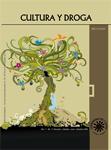Authors
Abstract
Abstract: Two aspects are substantial in this presentation, the economic analysis of the production, traffic and consumption of “drugs” require a microeconomic glance that explains the mechanisms that operate in each of these stages. The consequences for society can be analyzed from the macroeconomic point of view, since these activities involve dimensions that due to their economic size and the use of the involved factors overflow other formal markets. This analysis aims to observe the impact of a policy of persecution as a solution. The consequences that generate the repression and the punishment of illegal market activities, as all the past experiences around prohibitions of the production, consumption and traffic of drugs have always generated more production, traffic and social costs, let’s remember the history of alcohol in the United States. History demonstrates that the punishment does not reduce the consumption in general terms, in Becker et al. (2006), following a model of crime and punishment with the conventional ideas of the neoclassic economy “the expectation of punishment elevates the price that the drug suppliers need to receive to be willing to assume the considerable risk that surrounds the drug business”. The price increases since the supply is reduced and the demand by the type of good is elastic, and the perspective of the greater price discourages the purchase and the consumption of illegal drugs, as it happens with legal goods and services. While stricter is the war against drugs, greater is the expectation of punishment, greater is price of drugs on the street and in general, less is the drug consumption. This hypothesis will be discussed from the microeconomic and macroeconomic aspects that can describe the drug market.
References
____________y Grossman, M. 2006. The Market for Illegal Goods: The Case of Drugs. Journal of Political Economy.
Elster, Jon. 1997. Egonomics. Gedisa.
___________2001. Sobre las pasiones. Paidós.
The real cost of cocaine. How our demand for drugs is devastating Colombia. The independent. 13 April 2006.
Rueda, Alberto. 2004. Carta abierta al presidente de la república. Internet. Documento en PDF.
Thoumi, Francisco E. “The Numbers Game: Let’s All Guess the Size of the Illegal Drug Industry”. Journal of Drug Issues, Vol. 35, No. 1, Winter 2005, p. 189.
National Drug Control. “What America’s Users Spend on Illegal Drugs 1988-2000” Washington, DC: Office of December 2001, p. 2.
National Drug Control. 2006.
United Nations Office on Drugs and Crime (UNODC), World Drug Report 2005 (Viena, Austria: UNODC, June 2005), p. 127.

 PDF (Español)
PDF (Español)
 FLIP
FLIP

















